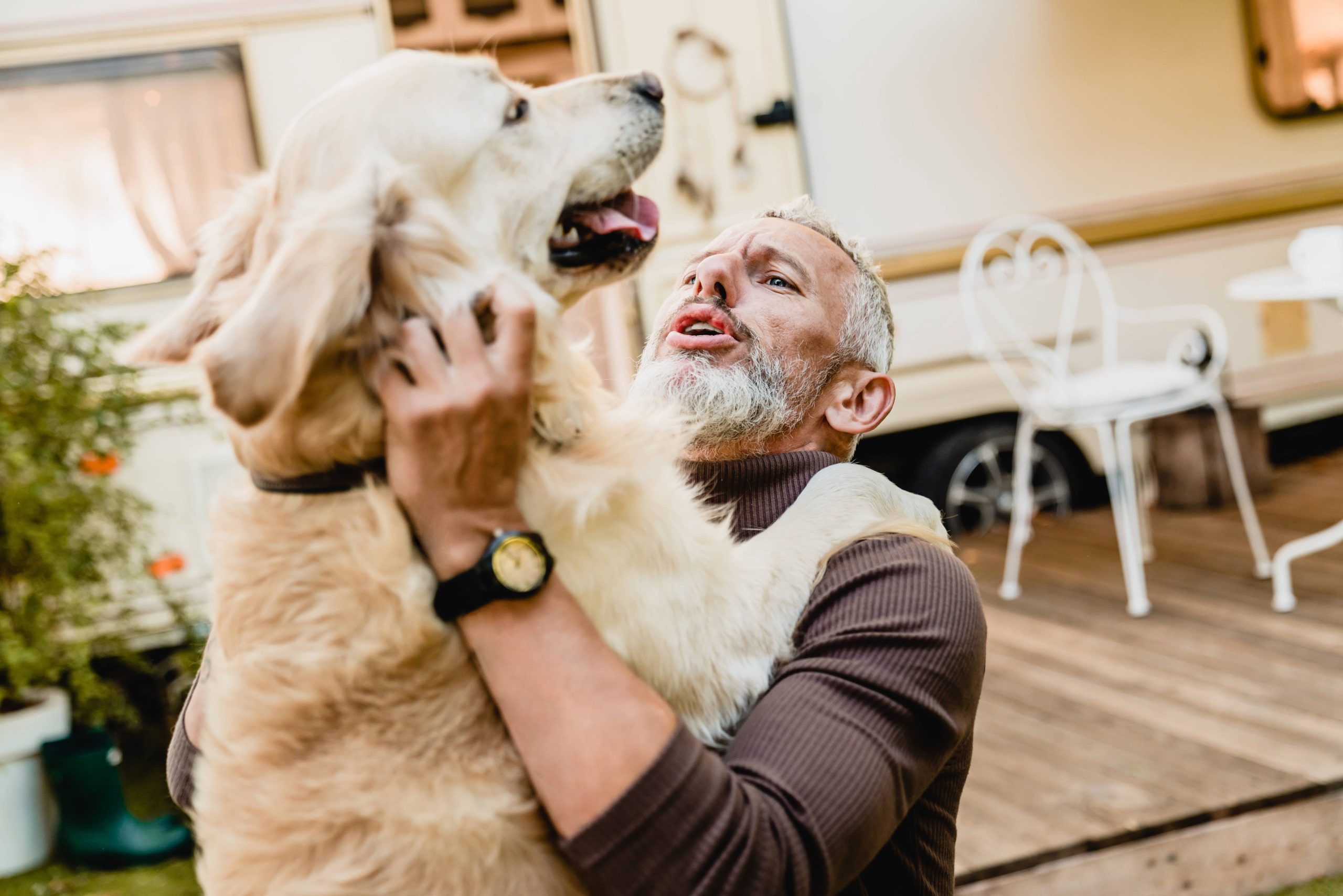
As a loving pet owner, it can be disheartening to see your older dog develop or continue to have bad habits. Whether your senior dog is chewing on furniture, jumping on guests, barking excessively, or has a lack of house training, it’s important to remember that it’s never too late to help them break those habits. With patience, consistency, and the right approach, you can teach your older dog to leave behind those undesirable behaviors and enjoy a more relaxed and happy life. In this blog post, we’ll explore various strategies for breaking bad habits in older dogs.
Understanding the Root Cause
Before approaching the issue of bad habits, it’s critical to understand why your dog is exhibiting these behaviors. Bad habits in older dogs can stem from a variety of reasons, including:
1. Medical Issues: Sometimes, undesirable behaviors are a result of underlying health problems. For example, excessive barking or restlessness could be due to pain or discomfort. Always consult with your vet to rule out any medical issues that might be contributing to your dog’s behavior.
2. Anxiety or Stress: Older dogs may experience changes in their environment or routines that could cause anxiety or stress. This could be due to the introduction of new pets, a move to a new home, or even changes in family dynamics.
3. Lack of Stimulation: Dogs, regardless of their age, need mental and physical stimulation. Boredom can lead to destructive behaviors such as chewing, digging, or excessive barking.
4. Learned Behaviors: Often, bad habits are learned behaviors that have gone unchecked over time. If these behaviors were unintentionally reinforced in the past, your dog might have developed a habit.
Strategies for Breaking Bad Habits
Once you’ve identified the potential root cause of your dog’s behaviors, you can begin implementing strategies to help break those habits.
Consistency is Key
Consistency is essential when it comes to training and breaking bad habits in dogs. Ensure that everyone in your household is on the same page and understands the importance of following through with the training techniques you choose. Mixed signals can confuse your dog and make it more difficult to break the habit.
Positive Reinforcement
Positive reinforcement is one of the most effective methods for modifying your dog’s behavior. Reward your dog with treats, praise, and affection when they exhibit desired behaviors. For example, if your dog stops barking when commanded, immediately reward them with a treat and positive reinforcement. Over time, your dog will associate the good behavior with positive outcomes.
Establish a Routine
Dogs thrive on routine and structure. Establishing a consistent daily routine for feeding, walks, playtime, and training can help reduce anxiety and stress in your dog. This can be particularly helpful if your dog’s bad habits are related to changes in their environment or routine.
Mental and Physical Stimulation
As dogs age, they may not be as physically active as they once were, but that doesn’t mean they don’t need mental and physical stimulation. Engage your older dog with age-appropriate activities such as gentle walks, puzzle toys, and interactive play. Ensuring your dog gets enough exercise and mental stimulation can help reduce boredom and the likelihood of destructive behaviors.
Redirect and Replace
If your dog has developed a bad habit such as chewing on furniture, it’s important to redirect their behavior to a more appropriate activity. Provide them with suitable chew toys and praise them when they use them instead of the furniture. Redirecting their behavior and offering an alternative can help your dog understand what is acceptable.
Training and Commands
Reinforce basic obedience commands such as “sit,” “stay,” “leave it,” and “come.” These commands can be useful tools for managing your dog’s behavior. For example, if your dog starts to jump on guests, using the “sit” command followed by a reward can help them understand what is expected. Regular training sessions can also strengthen the bond between you and your dog and provide mental stimulation.
Address Anxiety and Stress
If your dog’s behavior problems are related to anxiety or stress, work on identifying and minimizing the triggers. Create a safe and comfortable space for your dog where they can retreat when feeling anxious. Consider using calming aids such as pheromone diffusers, anxiety wraps, or calming supplements if recommended by your vet. In more severe cases, consult with a professional dog behaviorist for additional support.
Patience and Persistence
Breaking bad habits in older dogs requires patience and persistence. Expect setbacks and understand that change takes time. Celebrate small successes and remain committed to the process. Your older dog still can learn new behaviors and adapt to new routines with your support.
Conclusion
Breaking bad habits in older dogs is a journey that requires understanding, consistency, and patience. By identifying the root causes of the behaviors, providing positive reinforcement, and creating a structured routine, you can help your dog leave behind their undesirable habits. Remember, it’s never too late to teach your dog new tricks and improve their quality of life. A well-behaved dog is not only happier but also enjoys a stronger bond with their owner. So, take the time to work with your senior dog and enjoy the benefits of a well-mannered furry companion.






